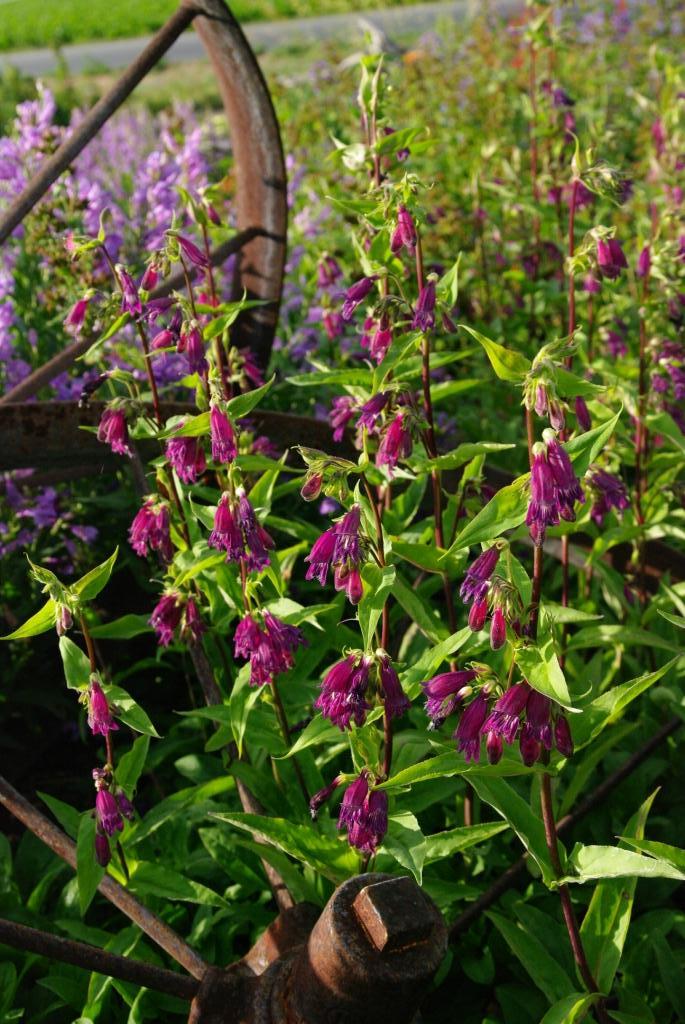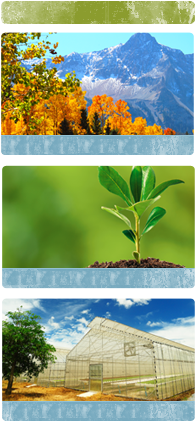Whipple's Penstemon in the Landscape

Stephen Love, University of Idaho
Scientfic Name: Penstemon whippleanusCommon Name: Whipple's Penstemon
Description: Whipple’s penstemon is a long-lived, herbaceous perennial. It dies back annually to an above-ground woody stem. In spring, the plants develop large, dense basal mats of large, dark green, glossy leaves. From this base arises upright, leafy flower stalks. Flowers grow in groups (called verticillasters) along the stems. Flower color is variable, with white, light blue, gray, wine, or purple being common. The best forms of the species have very dark purple flowers. The primary bloom period is late spring into early summer, although flowers may appear sporadically through the summer. Whipple’s penstemon is one of the few beardtongues that can withstand, and actually prefers, plenty of moisture and some shade. This species is effective in beds and borders.
Native Habitat: Native across much of the Intermountain West. Occurs frequently at elevations ranging from 6,000 to 11,500 feet at forest edges, in meadows, and on slopes.
Cultural Requirement
Soil: Adapted to a range of soil types, including moist, but well-drained soils. Plants from some locations may express iron chlorosis when grown on soils with high pH. Can tolerate soils with high organic matter.
Moisture Tolerance: Needs a moderate supply of moisture, more than most other penstemon species. Although considered a drought-tolerant plant, supplemental irrigation will be required.
Sun/Shade/Preference: Tolerates full sun but will grow best in situations with some afternoon shade.
Transplanting: Tolerates transplanting well, both from pot to pot and from pot to garden. Plants develop rapidly and can be produced in pots up to one gallon in size.
Propagation: Best from seed. Requires a 6 to 12 week cold stratification period to produce maximum levels of germination. Even with stratification, seed germination is sometimes sporadic. Very easy to propagate using rooted cuttings.
Maintenance (pruning, fertilization, deadheading, division, irrigation, etc): Removing stems with spent flowers will keep the basal leaf mat healthy and may encourage a second cycle of bloom. Supplemental irrigation on a bi-weekly schedule is needed to prevent drought stress. Only occasional, minimal fertilization is needed, as plants demand.
Insect, disease, or other problems: Whipple’s penstemon has few insect or disease issues. Occasionally, aphids may appear on tender flower stalks, but seldom require control protocols.
Landscape Value
Use in the Landscape: Whipple’s penstemon is an upright, moderately tall plant with subtle but distinct flower color. It is best used to complement colorful plants with complementary color in beds and borders. It can be used in either naturalized or formal designs. Whipple’s penstemon can also be successfully grown in decorative pots.
Weediness/Invasive Potential: Whipple’s penstemon is clump forming and vegetatively non-aggressive. It will occasionally produce volunteer seedlings but does not have a weedy habit.
Foliage: Leaves in the prominent basal mat are spoon-shaped, dark green, and glossy. Smaller, pointy, bract-like leaves grow up the flowering stalks and into the inflorescence.
Flower: The flowers grow on upright stems that are 12 to 24 inches long. The corollas are about 1 ½ inches long, tubular, and droop downward from the stem. Flower color ranges from white, to gray, to light blue, to wine, to various shades of purple. The flowers and other inflorescence parts are distinctly hairy.
Timing: June-July
Fruit: A medium-sized, upright, globular capsule, with sharp, stiff lobes at the tip. Each capsule holds numerous seeds.
Form: Horizontal prior to bloom. Upright in flower.
Texture: Moderately coarse.
Ultimate Size: Plants from different sources vary in height. Generally 12 to 24 inches tall and with a spread of 12 inches or more, when mature.
Rate of Growth: Foliage establishes quickly and grows rapidly. Occasionally, some first-year bloom will occur. Full bloom potential is usually expressed the second year.
Suggested Plant Partners: Plant Whipple’s penstemon among colorful, moderate-sized plants, or in front of taller plants. Partners should have similar moderate water requirement to this species, e.g. the shrubs Philadelphus lewisii and Cornus sericea. Other good partners include moderate-sized clump grasses such as Sporobolus airoides, Deschampsia caespitosa, or Schizachyrium scoparium and colorful wildflowers such as Zauschneria garrettii, Aquilegia coerulea, Aquilegia formosa, Delphinium species, and Erigeron speciosus.
Availability: Occasionally found as a potted plant at local or mail order native plant nurseries. Seed can be purchased from native plant seed suppliers.
Cultivars: None.
References:
Lindgren, D. and Wilde, E. 2003. Growing Penstemons: Species, Cultivars, and Hybrids. Infinity Publishing, Haverford, PA.
Mee, W., Barnes, J., Kjelgren, R., Sutton, R., Cerny, T. and Johnson, C. 2003. Water Wise: Native Plants for Intermountain Landscapes. Utah State University Press, Logan, UT.
Meyer, S., Kjelgren, K.K., Morrison, D.G. and Varga, W.A. 2009. Landscaping on the New Frontier. Utah State University Press, Logan, UT.
Nicholls, G. 2002. Alpine Plants of North America: An Encyclopedia of Mountain Flowers from the Rockies to Alaska. Timber Press, Portland, OR.
Nold, R. 1999. Penstemons. Timber Press, Portland, OR.
Strickler, D. 1997. Northwest Penstemons. Flower Press, Columbia Falls, MT

